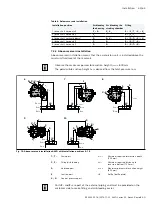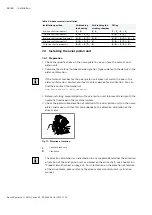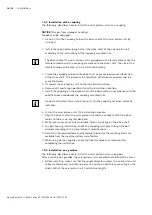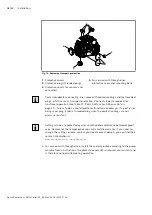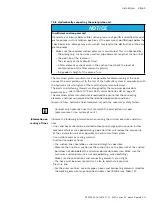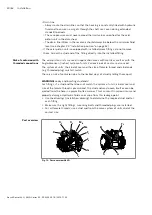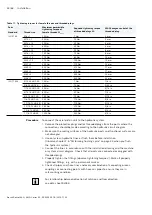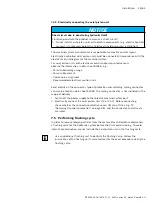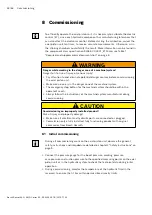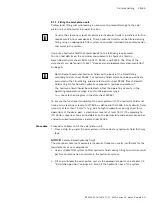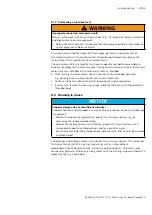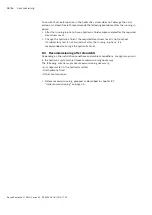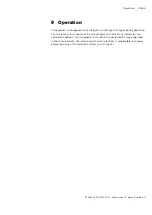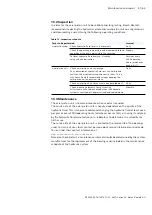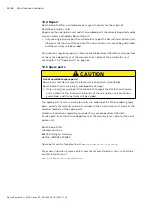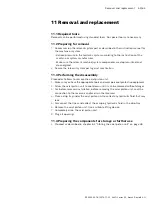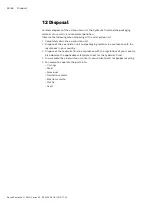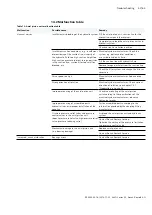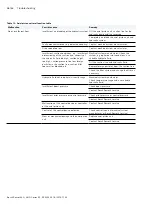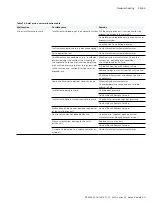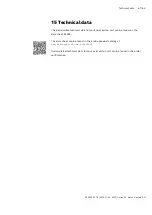
46/64 Commissioning
Bosch Rexroth AG, A4VG Series 35, RE 92035-01-B/2019-11-25
NOTICE!
Risk of property damage due to inadequate lubrication!
Product can be damaged or destroyed!
▶
When using a shut-off valve in the suction line, make sure that the drive of the
axial piston unit can only be started when the shut-off valves are open.
▶
Dimension a shut-off valve in the suction line so that no inadmissible pressure
drop occurs in the suction area when the shut-off valve is open.
3.
If you use a shut-off valve in the suction line, only operate the axial piston unit
with opened shut-off valves.
4.
Test the direction of rotation of the drive motor. To do this, run the drive motor
briefly at the lowest rotational speed (inching). Make sure that the direction
of rotation of the axial piston unit agrees with the details of the name plate,
see chapter 5.4 "Product identification", Fig. 4: Name plate A4VG on page 24.
5.
Operate the axial piston pump at a low rotational speed (starter speed for
internal combustion engines and/or inching mode for electric motors) until the
hydraulic system is completely filled and air bled. To verify, drain the hydraulic
fluid at the drain port until there are no bubbles in the fluid.
8.1.2 Testing the hydraulic fluid supply
The axial piston unit should always have a sufficient supply of hydraulic fluid.
For this reason, the supply of hydraulic fluid must be ensured at the start of the
commissioning process.
When you test the hydraulic fluid supply, constantly monitor noise development and
check the hydraulic fluid level in the reservoir. If the axial piston unit becomes louder
(cavitation) or the leakage fluid is discharged with bubbles, this is an indication that
the axial piston unit is not being sufficiently supplied with hydraulic fluid.
For information on troubleshooting, see chapter 14 "Troubleshooting" on page 56.
To test the hydraulic fluid supply:
1.
Allow the drive motor to run at the lowest rotational speed. The axial piston unit
should be operated without load. Pay attention to leaks and noises.
2.
Check the axial piston unit's drain line during the test. The drain fluid should be
without bubbles.
3.
Increase the load and check whether the working pressure rises as expected.
4.
Perform a leak test to ensure the hydraulic system is sealed and can withstand
the max. pressure.
5.
Check the suction pressure at port
S
of the axial piston pump at nominal speed
and maximum swivel angle. Refer to data sheet 92035 for the permissible value.
6.
At maximum working pressure, check the case pressure at port
T
1
or
T
2
. Refer to
data sheet 92035 for the permissible value.


